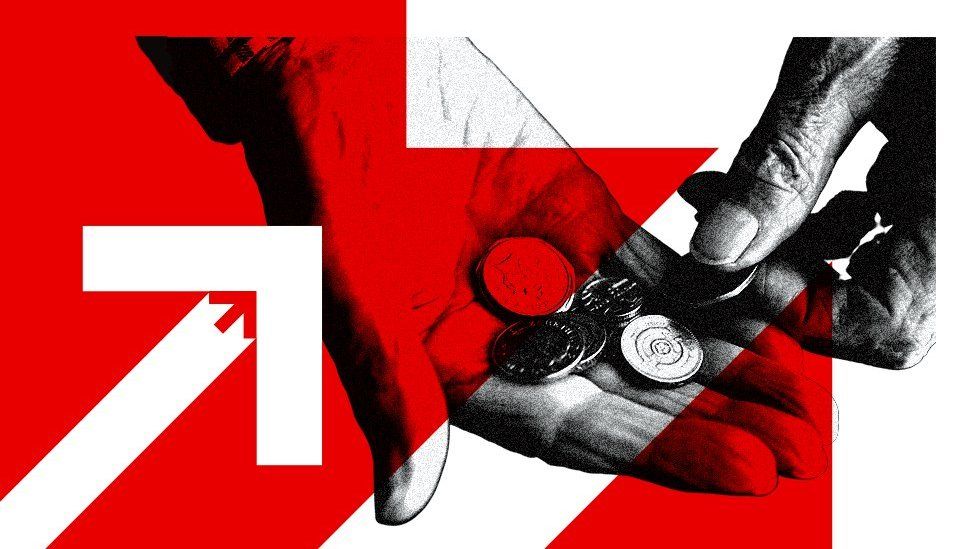
The rate at which prices are rising slid to 6.7% in the year to August, down from 6.8% in July.
Slowing food inflation on items like milk, cheese and eggs helped drive the surprise fall, although the pace of food price rises remains high – at 13.6%.
To help slow inflation, the Bank of England has increased interest rates 14 times to 5.25% since November 2021.
What does inflation mean?
Inflation is the increase in the price of something over time.
If a bottle of milk costs £1 but £1.05 a year later, then annual milk inflation is 5%.
How is the UK’s inflation rate measured?
The Office for National Statistics (ONS) tracks the prices of hundreds of everyday items in an imaginary “basket of goods”.
The basket is constantly updated to reflect shopping trends, with the most recent changes adding frozen berries and removing alcopops.
Each month’s inflation figure shows how much these prices have risen since the same date last year.
You can calculate inflation in various ways, but the main “headline” measure is the Consumer Prices Index (CPI).
What is “core inflation”?
“Core inflation” excludes the price of energy, food, alcohol and tobacco.
This measure was 6.2% in August, down from 6.9% in June and July, which was the highest level since 1992.
The Bank of England considers this number as well as CPI when deciding whether to change interest rates.
Why have prices risen so fast?
Soaring food and energy bills helped drive inflation up.
This effect was compounded in the UK in February by a shortage of vegetables, which took food inflation to a 45-year high.
Alcohol prices in restaurants and pubs had also risen.
Your device may not support this visualisation
How does raising interest rates help to tackle inflation?
The Bank of England has a target to keep inflation at 2%, but the current rate is still well above that.
This makes borrowing more expensive, and can mean some people with mortgages see their monthly payments go up. Some saving rates also increase.
When people have less money to spend, they buy fewer things, reducing the demand for goods and slowing price rises.
Businesses also borrow less, making them less likely to create jobs, and may cut staff.
Are wages keeping up with inflation?
This nearly matched the rate of inflation in the same period, which meant real wage growth was almost flat for the first time in two years, after falling behind.
However, unions point out that many workers have received smaller pay increases, and there have been widespread strikes over pay.
The government has argued that big pay rises could push inflation higher because companies might increase prices as a result.
When will inflation go down?
Lower inflation doesn’t mean prices fall. It just means they rise less quickly.
The Bank of England has predicted inflation will drop to 5% by the end of 2023, rather than the 4% it had been anticipating.
But he admitted that price inflation has been “more sticky than previously expected”.
What’s happening to inflation and interest rates in Europe and the US?
Other countries have also been experiencing a cost-of-living squeeze.
Many of the reasons are the same – increased energy costs, shortages of goods and materials, and the fallout from Covid.
August saw the 11th increase in rates by the Federal Reserve since early 2022, with rates at their highest for almost two decades.
It warned further raises would follow “if appropriate”.

